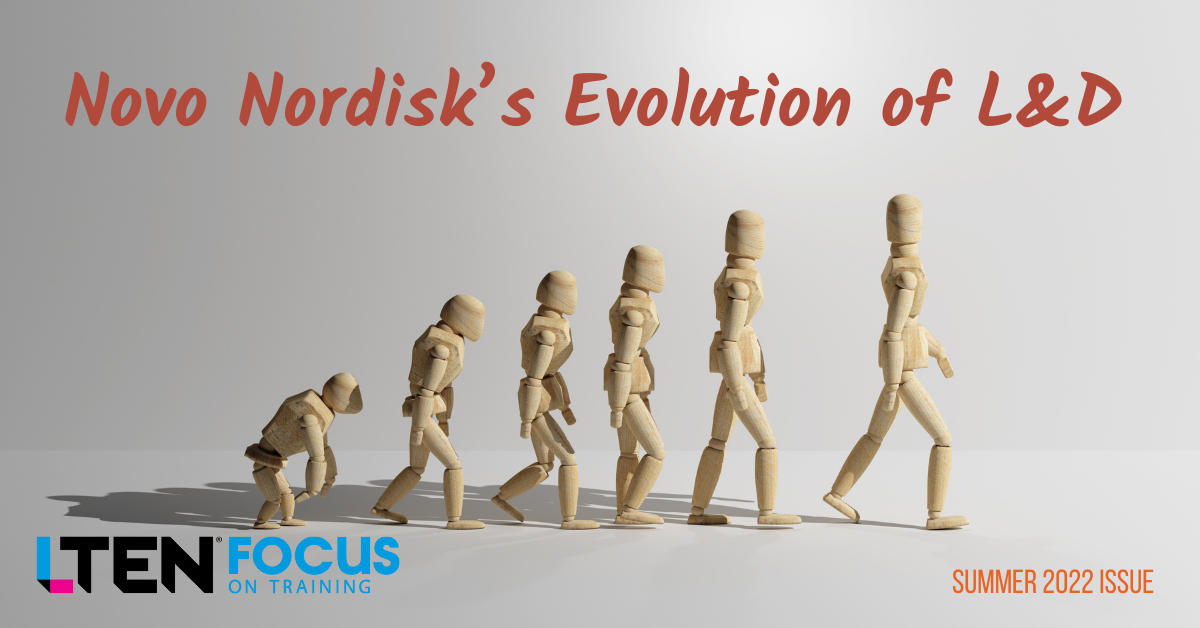
Cover Story – Danielle Steffen
Change started with breaking down silos to integrate talent as one team
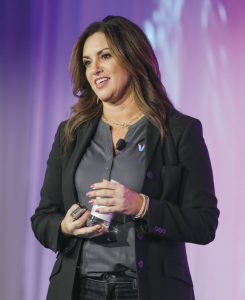
Addy Larson, a senior specialist at Novo Nordisk, addresses field sales professionals during a product launch meeting
Novo Nordisk (NNI) is a leading global healthcare company that’s been making innovative medicines to help people with diabetes and other serious chronic diseases lead longer, healthier lives for more than 95 years. The largest affiliate of the global organization, Novo Nordisk is constantly evolving to meet the needs of the dynamic U.S. healthcare environment.
Jon Murray joined NNI in April 2020 as the executive director of commercial learning & development (CL&D). To support the business through internal demands and novel external pressures, he knew that to remain relevant with customers, the speed of learning had to exceed the speed of change. Thus, Murray quickly got to work evolving the department to remove barriers and allow for innovation.
One Team
Murray heard his clients loud and clear: Leaders wanted change. He had a vision of what the modern-day learner and performance consultant should look like, and he knew that to succeed, this vision had to be shaped by the team, for the team. The first step was to develop a new operating model in which silos were broken down to integrate talent as one team.
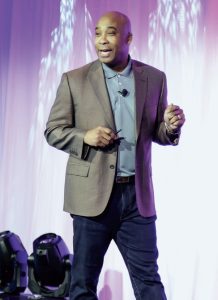
Ervin Wilson, a Novo Nordisk senior specialist, speaks with field sales professionals at a product launch
An informal matrix environment was established to foster idea sharing and interdepartmental collaboration, leading to a better quality of work through diversity of thought and experience. Structural changes were implemented to support the model, including the creation of a centralized capabilities team and a portfolio franchise-focused team to allow for strategic client alignment.
In addition, enablement processes were developed by the dedicated operations team, including learning technology mapping and building out communications and measurement strategies.
To ensure successful adoption of the new operating model, a focus on upskilling CL&D was critical. A shift in mindset was needed, to move past reactive “order taking” and evolve to approach stakeholder relationships with a performance consultant lens, focusing on business outcomes and shared accountability.
Instead of merely giving clients what they initially requested, members of CL&D became trusted advisors who asked the right questions to fully understand customer challenges and objectives. This commitment to thoroughly assess business needs before aligning on the right solution allowed clients to be involved throughout the process, ultimately resulting in enhanced strategic partnerships.
The commitment to elevate CL&D went beyond advancing the team from performance consultants to trusted advisers; internal engagement and motivation was driven through the creation of new opportunities within. Retention and promotion were encouraged through managing talent in a manner that assigned relevant developmental projects that enabled on-the-job, experiential learning.
Further, a unique perspective to sourcing talent was embraced – instead of placing heavy emphasis on previous formal titles listed on a resumé, the focus shifted to hiring and promoting those individuals with the right skills, capabilities and experiences. This approach opened the doors of opportunity in both directions and embodied the spirit of innovation that became integral to team culture.
The Foundation
To build external advocacy, the team first had to internally adopt a one-team mindset. From the beginning, everyone was involved as part of the solution with opportunities to lead at all levels, thus creating accountability and empowerment. The vision was built collaboratively, with all voices heard as part of the process.
This complemented leaderled diversity, equity, inclusion & belonging (DEI&B) efforts, especially as it pertains to inclusivity. To further this, a team of culture champions was formed, including several workstreams to identify areas of opportunity and develop solutions around topics such as work/life balance and rewards and recognition.
The second fundamental component was to refine processes within the operations department, led by director Tara Semisch. The ops team serves as partners across the organization to optimize endto-end workflow, while strategically challenging the status quo, elevating expectations and enabling success.
Semisch and her team got to work building the foundation for evolving the operating model, redefining how we worked through the mapping of strategic initiatives. A key element of this was the inclusion of project chartering to identify clear target conditions aligned to business outcomes. This provided the tools necessary for the team to effectively consult on performance.
“Operations bent and flexed throughout this entire journey,” Semisch said. “The team was responsible for conceptualizing and building the processes integral to the operating model. It takes a special group to continue to ‘run the business’ while upskilling to meet the needs of our clients. I am proud of the operations team and how we have evolved to strategically partner with our stakeholders while driving toward strong business process that inevitably led to the larger team’s success.”
The CL&D team was challenged to “slow down to speed up,” which fostered novel ways of thinking that led to different types of outcomes. Putting the learner first became the focus, and leaning on insights from end users throughout the development of learning experiences became key.
New-hire training was elevated to include more real-world application while allowing for automation and a reduction in lead time to first customer engagement. Supporting an emphasis on innovation, the team was encouraged to explore and establish new outside partnerships as well as given permission to dedicate time to development through LTEN involvement.
The last step was to socialize successes and brand the new model through leveraging advocates and influencers. The team was fully invested in their new path, which fueled a relentless desire to succeed as one team.
![]() “Walls were knocked down, allowing individuals to follow their passions via nontraditional routes. The opportunities are here, and we’re paving the way for the next generation to have even more impact.” — Chris Sumter, Manager, Academy & Franchise
“Walls were knocked down, allowing individuals to follow their passions via nontraditional routes. The opportunities are here, and we’re paving the way for the next generation to have even more impact.” — Chris Sumter, Manager, Academy & Franchise
![]() “Essential to the transformation has been a willingness to take risks and invest in our people. One of the biggest hurdles to overcome when pitching a novel idea is a ‘no.’ That obstacle was removed to give our organization a competitive edge, and the positive response from our strategic partners has been overwhelming.” — Jason Glenn, South Area Director, Business Management Capabilities
“Essential to the transformation has been a willingness to take risks and invest in our people. One of the biggest hurdles to overcome when pitching a novel idea is a ‘no.’ That obstacle was removed to give our organization a competitive edge, and the positive response from our strategic partners has been overwhelming.” — Jason Glenn, South Area Director, Business Management Capabilities
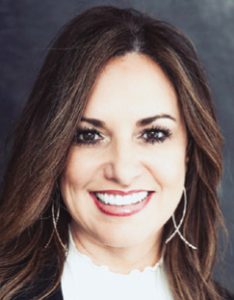 “When presented with the opportunity to pursue a sales manager position, I realized that I was not ready to leave Employee Experience. Our culture allows for non-traditional career paths, encourages individuals to lead with their strengths, and has created a team who thrives in a family-like environment.” — Addy Larson, Senior Specialist, Business Management
“When presented with the opportunity to pursue a sales manager position, I realized that I was not ready to leave Employee Experience. Our culture allows for non-traditional career paths, encourages individuals to lead with their strengths, and has created a team who thrives in a family-like environment.” — Addy Larson, Senior Specialist, Business Management
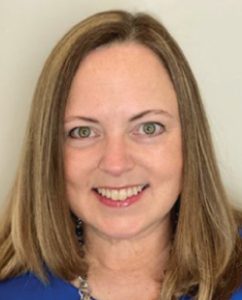 “Shifting individual, and collective, mindsets from ‘how things have been done’ to ‘how things can be done,’ is not easy to achieve. Thanks to the vision set forth, and our performance consulting approach, this is exactly what has transpired within our department and with key stakeholders. The result has been widespread client willingness to step beyond preexisting comfort zones and embrace new opportunities.” — Wendy Keppy, Director, MAPA Capabilities
“Shifting individual, and collective, mindsets from ‘how things have been done’ to ‘how things can be done,’ is not easy to achieve. Thanks to the vision set forth, and our performance consulting approach, this is exactly what has transpired within our department and with key stakeholders. The result has been widespread client willingness to step beyond preexisting comfort zones and embrace new opportunities.” — Wendy Keppy, Director, MAPA Capabilities
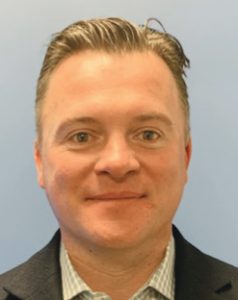 “I’ll always look back on this experience with very fond memories. The strength of this team doesn’t come from the strategic plan, nor the tactics within it … it comes from the people. The level of talent within this team is unsurpassed.” — Jon Murray, VP, Employee Experience
“I’ll always look back on this experience with very fond memories. The strength of this team doesn’t come from the strategic plan, nor the tactics within it … it comes from the people. The level of talent within this team is unsurpassed.” — Jon Murray, VP, Employee Experience
Established Results
Throughout the CL&D evolution, numerous key achievements have been met, all while supporting the greater organization’s U.S. transformation. Most notable and critical to the continued success of CL&D is the re-establishment of trust within select business units and brand teams.
The academy and franchise team, led by Senior Director Matt Forde, in collaboration with the area business management teams, successfully executed a sequence of Plans of Action (POAs), which required running the business while preparing for a two-phase product launch – during a pandemic.
The Capabilities team, led by Senior Director Stephanie Geraci, developed curriculum to support national initiatives for representatives and educators and focused on leadership development through the creation and enhancement of various programs, in collaboration with global.
“I am in awe of the agility our entire team demonstrated throughout the evolution of our operating model. While we didn’t know what was ahead, we had the confidence in one another’s ability and our vision that we were on the right track toward meaningful change for the organization,” Geraci said. “As a result of a commitment to our own personal development and willingness to work together unlike ever before, we realized numerous successes within our first year and earned the opportunity to make broader impact across NNI in 2022.”
The success of these initiatives led to stakeholders approaching us to focus on enablement of the U.S. marketing ecosystem, creating an aligned internal function, led by Director Julie Robinson. The area directors of business management, Jason Glenn, Mike Larsen and Sonia Moorthy, all celebrated numerous local wins as their teams of senior specialists elevated their relationships with key stakeholders and delivered better business outcomes.
One such client, Brett Liner, executive director of national cardiometabolic sales, said “What I noticed the most is increased strategic partnership. CL&D leveraged my collaborative partners to truly understand the CV (cardiovascular) business needs and objectives, then provided the optimal solution to set my team up for success. They are role models of the behaviors of a true performance consultant!”
The operations team defined impact through early measurement of learning programs and leveraged technology through the creation of a content management system and piloted automation through the learning management system.
Mike McNulty, director of rare disease capabilities, leaned into his role as a trusted adviser and enhanced key account management and strategic account management across his department, producing measurable impact. The market access and public affairs (MAPA) team, led by Director Wendy Keppy, successfully rebuilt the onboarding and development framework for all functions throughout the MAPA department. This began with a thorough needs assessment, and resulted in a newfound collaborative approach to learning, for new hires and incumbents.
A New Challenge
The greater organization has recognized our efforts and impact to the business. We are now becoming the “Employee Experience team” and our people development efforts will span beyond the commercial organization to impact all NNI. To support this, we are building a talent management function to fully encompass the end-to-end learner journey led by Senior Director Shona Selkow and Director Matt Bintliff.
Believing that people development is our competitive advantage, the employee experience team’s mission is to empower meaningful growth through driving business and personal achievement. The evolution of L&D has propelled a palpable shift in the learning culture across Novo Nordisk, and it’s only just beginning.
![]() Danielle Steffen is capabilities manager, employee experience at Novo Nordisk, also on special assignment as communications lead, global people development center of excellence. Email Danielle at dlst@novonordisk.com.
Danielle Steffen is capabilities manager, employee experience at Novo Nordisk, also on special assignment as communications lead, global people development center of excellence. Email Danielle at dlst@novonordisk.com.








